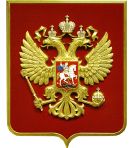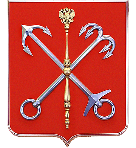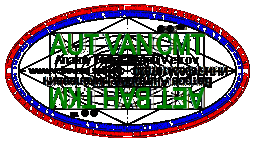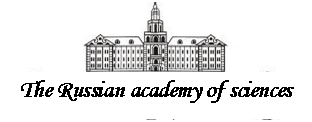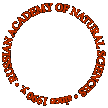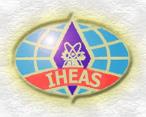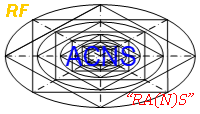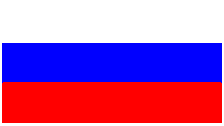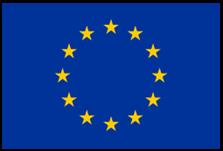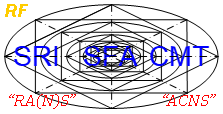The list of directions of applied scientific researches and scientific results
for the international action
in “The Nobel committee” (The Kingdom of Norway and The Kingdom of Sweden)
(page 1 from 2 pages)
Dear citizens of The Russian Federation and the foreign countries!
We invite You to take part in “The IInd (IIIrd, IVth, Vth and VIth) international action
of "The Nobel committee" (The Kingdom of Norway and The Kingdom of Sweden),
the author of the unique cognitive modeling technology
and the scientific direction "Cognitive informatics (computer science),
the cognitive modeling technology
for the system and financial analysis" ("AUT CMT SFA"),
academician of (natural) sciences ("(SIO) "ACNS"") Vetrov A.N.,
"The international Higher education academy of sciences" ("IHEAS"),
"The Russian academy of (natural) sciences" ("RA(N)S"),
"(SIO) "Academy of cognitive natural sciences"" ("(SIO) "ACNS""),
"The Administration of Saint-Petersburg city" and "The Government of RF"
at support of "The Presidents of RF and the foreign countries"
due to means of the budget, sponsors, interested and "The Nobel prize" –
the procedure of the performance with the scientific reports and rewarding in organizations-participants,
the presentation of diplomas, medals and "The Nobel prize" in "The Nobel committee",
the creation of products as valuable monuments
of architecture, town-planning and landscape-gardening art,
important objects of historical, cultural, art and scientific heritage
for (non)residents at the international level,
the demonstration of achievements in the area of technology, architecture and building
in "The park of the 50th-century of The Great October socialist revolution named after V.I. Uljanov (Lenin)"
and "Saint-Petersburg exhibition centre" ("SPbEC")
at "Exhibition of achievements of science and technology" ("EAST")
with accommodation in "The hotel "Karelia"" ("The group of hotels "Intourist"")”.
The list of applied scientific results
for the international action
in “The Nobel committee” (The Kingdom of Norway and The Kingdom of Sweden)
For the applied scientific researches directions
(the micro-system, financial and complex analysis)
For the applied (scientific) researches direction 1.1.
“Cognitive modeling in the natural sciences“ (“NEN”)
(The scientific areas “Applied physics:
computer science, mathematics, mechanics, metrology, astronomy,
(complex) system analysis, geography, electric-engineering,
nuclear power-engineering, instrument-making and other sciences”)
The laboratory researches section 1.1.1 (“SIC”)
1.1.1. For the section, scientific-researches laboratory
and (financing) department of applied (scientific) researches
“(The research of) applications of (cognitive) informatics, cybernetics,
automatics, computer engineering, data transmission and connection” (“SIC”) (*)
(see application in 2011-2013 y. and scientific work from the 25th of December 2008 y.)
Þ applications of computer science (theory of information) –
the general questions of the usage of computer science (theory of information),
usage of theory of computer science, usage of theory of the organization of information work,
usage of theory of the documentary information sources,
usage of theory of the analitical-synthetic processing of documentary information sources,
usage of theory of information search, usage of theory of information service,
usage of theory of the technical means of support of information processes,
usage of theory of the cognitive modeling technology
in the applications of computer science (theory of information);
Þ applications of cognitive informatics (computer science) (*) –
the general questions of usage of cognitive informatics (computer science),
usage of theory of the modified stratified(layered)-step model
of perception (psychophysiology of perception),
processing (cognitive psychology) and understanding (applied linguistics)
of the content of information fragments,
usage of theory of the cognitive modeling technology
in the technical, economic, physical-mathematical and other sciences,
usage of theory of the parametrical cognitive models block
for the system analysis of the information-educational environments
(the cognitive models of the subject of training and the means of training),
usage of theory of the parametrical cognitive models block
for the financial analysis of the (credit) organizations and enterprises
(the cognitive models for the vertical, horizontal and trend financial analysis),
usage of the parametrical cognitive models block
for the complex analysis of the difficult objects, processes and phenomena,
usage of theory of the ways of representation of the structure of cognitive models and difficult problem environments:
the formal classical of the 0th generation (the logical and production models),
the nonformal classical of the 0th generation (the semantic network, the frame network and ontology),
the formal new of the 0th generation (the calculus of theory of sets and corteges on domains
and the innovative calculus of theory of sets and graphs),
the nonformal new of the 0th generation (the multilevel structural scheme
and the multilevel encapsulated pyramids combining theory of graphs and theory of sets),
the flat of the 1st generation (the cognitive circle and cognitive disc),
the volumetric of the 1st generation (the cognitive cylinder, cognitive cone and cognitive sphere),
the flat and volumetric of the 2nd generation (the one-, two-, three-, four-, five- and more cognitive circle,
cognitive disc, cognitive cylinder, cognitive cone and cognitive sphere),
the hybrid of the 3rd generation (the combinations of the existing cognitive models),
usage of theory of the adaptive automation means of the information-educational environment
(the basic and applied diagnostic module, the electronic textbook,
the laboratory practical work, the electronic dean, the electronic library and others),
usage of theory of the technical means of support of the adaptive information interaction
(the adaptive representation of a sequence of information fragments processor,
the question-answers structures sequence processing processor, the linguistic processor and others),
usage of theory of the technical means of support of the financial analysis
(the automation means of formation of the working plan of accounts
based on the normative-regulated plan of accounts of the accounting,
the automation means of formation of the accounting balance and the report about the profits and losses of organization
the automation means of the vertical, horizontal and trend financial analysis of the organization,
based on the analytical coefficients system),
usage of theory of the technical means of support of the complex analysis
(the automation means of formation and research based on the cognitive circle,
cognitive disc, cognitive cylinder, cognitive cone, cognitive sphere,
the one-, two-, three-, four-, five- and more cognitive sphere and others);
Þ applications of cybernetics –
the general questions of usage of cybernetics,
usage of theory of the automatic control systems,
usage of theory of modeling, usage of theory of the cybernetical control systems,
usage of theory of information, usage of theory of artificial intelligence,
usage of theory of the final automatic devices and formal languages,
usage of theory of reliability, usage of theory of the system analysis of the objects, processes and phenomena,
usage of theory of the cognitive modeling technology in the applications of cybernetics;
Þ applications of automatics and computer engineering –
the general questions of usage of the automatics and computer engineering,
usage of theory of the automatic control, usage of the theoretical bases of programming,
usage of theory of computer engineering,
usage of theory of the elements, units and devices of automatics and computer engineering,
usage of theory of the devices of input-output, usage of theory of the memory devices,
usage of theory of the technology and equipment
for the manufacture of the automatics means and computer engineering,
usage of theory of the keyboard and calculating-tabulating machines,
usage of theory of the analog counting machines (ACM),
usage of theory of the digital counting machines and counting complexes (CCM),
usage of theory of the analog-digital (hybrid) counting machines and counting complexes,
usage of theory of counting centres (CC), usage of theory of counting networks (CN),
usage of theory of the software of counting machines, complexes and networks,
usage of theory of the systems of automatic measurement, regulation and control,
usage of theory of the systems of the tele-control and tele-measurement,
usage of theory of the automated control systems of technological processes,
usage of theory of the automated systems of organizational management (managerial control),
usage of theory of the automation of designing, usage of theory of the automation of scientific researches,
usage of theory of the cognitive modeling technology
in the applications of automatics and computer engineering;
Þ applications of data transmission and connection –
the general questions of usage of data transmission and connection,
usage of theory of connection, usage of theory of the designing and constructing of connection devices,
usage of theory of the technology and equipment for the assembly and adjustment of connection equipment,
usage of theory of the systems of data transmission,
usage of theory of the communication lines, usage of theory of the multi-channel connection,
usage of theory of the networks and nodes (centres) of communication,
usage of theory of the services and services of connection,
usage of theory of the telegraph (cable) connection and equipment,
usage of theory of the systems and equipment of data transmission,
usage of theory of the tele-information services and equipment,
usage of theory of the telephone (tele-communication) connection and equipment,
usage of theory of the systems of transfer of the moving images and sound,
usage of theory of the facsimile connection and equipment,
usage of theory of the radio-communication and radio-broadcasting,
usage of theory of the hyber-optic (LED) connection and equipment,
usage of theory of television (TV),
usage of theory of the optical connection in the free space and equipment,
usage of theory of post connection,
usage of theory of the cognitive modeling technology in the applications of data transmission and connection.
The laboratory researches section 1.1.2 (“SMMF”)
1.1.2. For the section, scientific-researches laboratory
and (financing) department of applied (scientific) researches
“(The research of) applications of mathematics, mathematical physics,
mechanics, metrology, astronomy, space researches,
the complex system analysis based on the cognitive modeling technology
and complex problems of natural sciences” (“SMMF”) (*)
(see application in 2011-2013 y. and scientific work from the 25th of December 2008 y.)
Þ applications of mathematics –
the general questions of usage of mathematics,
usage of theory of the mathematical logics and applied bases of mathematics,
usage of theory of numbers, usage of theory of algebra,
usage of theory of topology, usage of theory of geometry,
usage of theory of the mathematical analysis,
usage of theory of the functions of valid variables,
usage of theory of the functions of complex variables,
usage of theory of the ordinary differential equations,
usage of theory of the differential equations with private derivatives,
usage of theory of the integrated equations,
usage of theory of the mathematical models of the natural sciences and technical sciences,
usage of theory of the equations of mathematical physics,
usage of theory of variation calculus,
usage of theory of optimal control, usage of theory of the functional analysis,
usage of theory of calculus mathematics,
usage of theory of the probability and mathematical statistics, usage of theory of the combinatory analysis,
usage of theory of graphs, usage of theory of mathematical cybernetics,
usage of theory of the cognitive modeling technology in the applications of mathematics;
Þ applications of mathematical physics (*) –
the general questions of usage of mathematical physics,
usage of theory of the mathematical models of the physics of elementary particles and fields,
usage of theory of the mathematical models of the physics of high energies and nuclear physics,
usage of theory of the mathematical models of the physics of gases and liquids,
usage of theory of the mathematical models of the thermal-dynamics and static physics,
usage of theory of the mathematical models of the physics of firm bodies,
usage of theory of the mathematical models of the physics of plasma,
usage of theory of the mathematical models of the physics of atom and molecule,
usage of theory of the mathematical models of optics,
usage of theory of the mathematical models of the physics of lasers,
usage of theory of the mathematical models of radio-physics,
usage of theory of the mathematical models of the physical bases of electronics and acoustics,
usage of theory of the cognitive modeling technology
in the applications of mathematical physics
(the cognitive models of the interaction between
elementary particles and firm bodies, fields, liquids and gases,
the cognitive model of the modified volumetric planetary model of atom named after Bohr N.H.D.,
the cognitive models of the temperature areas of plasma of atom and molecule,
the cognitive model of the optical environment of eye, the cognitive model of the distribution of waves in the environment);
Þ applications of mechanics (*) –
the general questions of usage of mechanics,
usage of theory of the general tasks and methods of mechanics,
usage of theory of the mechanics of liquid and gas, usage of theory of the mechanics of deformable firm body,
usage of theory of the complex and special sections of mechanics,
usage of theory of the cognitive modeling technology in the applications of mechanics,
usage of the theoretical bases of the cognitive modeling technology in mechanics,
usage of the theoretical bases of formation of the parametrical cognitive models block
for the complex system analysis of the difficult objects, processes and phenomena of mechanics,
usage of theory of the ways of representation of the structure of cognitive models and difficult problem environments
(the formal and non-formal classical and new of the 0th generation,
the flat and volumetric of the 1st generation and the 2nd generation
and the hybrid of the 3rd generation),
usage of theory of the adaptive automation means of the objects, processes and phenomena of mechanics,
usage of theory of the technical means of the support of research of the objects, processes and phenomena of mechanics,
usage of theory of the technical means of support of the complex system analysis
of the difficult objects, processes and phenomena of mechanics
(the automation means of formation and research based on the cognitive circle,
cognitive disc, cognitive cylinder, cognitive cone, cognitive sphere,
the one-, two-, three-, four-, five- and more cognitive sphere and others);
Þ applications of mechatronics (theory of hygroscope-building) –
the general questions of usage of mechatronics (theory of hygroscope-building),
usage of the theoretical bases of mechatronics, usage of theory of the general tasks and methods of mechatronics,
usage of theory of general mechatronics,
usage of theory of the mechatronics of liquid and gas,
usage of theory of the mechatronics of deformable firm body,
usage of theory of the complex and special sections of mechatronics,
usage of theory of the automation means and devices of mechatronics,
usage of theory of the cognitive modeling technology
in the applications of mechatronics (theory of hyroscope-building);
Þ applications of metrology (theory of measurement) –
the general questions of usage of metrology (theory of measurement),
usage of theory of the scientific bases of metrology,
usage of theory of the technical means of metrology and metrological support,
usage of theory of the state, national and international systems and services of metrology,
usage of theory of the measurement of separate sizes and characteristics,
usage of theory of the standard samples of the composition (structure) and properties of substances and materials,
usage of theory of the cognitive modeling technology in the applications of metrology (theory of measurement);
Þ applications of astronomy (*) –
the general questions of usage of astronomy,
usage of theory of astronomy, usage of theory of heavenly mechanics, usage of theory of astronometry,
usage of theory of the astro-physics of The Solar system, The Sun,
stars, fogs, interstellar environment and star systems,
usage of theory of cosmology, usage of theory of observatories,
usage of theory of the tools, devices and methods of astronomical supervisions,
usage of theory of the cognitive modeling technology in the applications of astronomy
(the cognitive models of the relative positioning
of 1, 2, 3, 4, 5 and more planets and satellites, The Earth, The Sun and others);
Þ applications of space researches –
the general questions of usage of space researches,
usage of theory of the devices and methods of the fundamental and applied scientific researches
of space environment,
usage of theory of the planning and realization of starts
of the space vehicles and artificial heavenly bodies,
usage of theory of the uncontrol movement of the space vehicles and artificial heavenly bodies,
usage of theory of the control of movement of the space vehicles and artificial heavenly bodies,
usage of theory of the space technics and technology,
usage of theory of the safety and medical-biological problems of space flights,
usage of theory of the use of space systems for the connection and navigation,
usage of theory of the practical problems of the development of extraterrestrial territories and the prospects of astronautics,
usage of theory of the fundamental and applied scientific researches of astronomical objects
by the space means,
usage of theory of the geo-physical fundamental and applied scientific researches
by the space means,
usage of theory of the research of The Earth from the space,
usage of theory of the cognitive modeling technology in the applications of space researches;
Þ applications of the complex system analysis (*) –
the general questions of usage of the complex system analysis,
usage of theory of the tendencies, dependences and laws of the complex system analysis
of the difficult objects, processes and phenomena,
usage of theory of the cognitive modeling technology
with dynamic cloning, verification and subverification,
usage of theory of the iterative cycle of the cognitive modeling technology,
usage of theory of the technique of use of the cognitive modeling technology
for the complex system analysis of the difficult objects, processes and phenomena,
usage of theory of the parametrical cognitive models block for the complex system analysis
and the increasing in the efficiency of functioning of the difficult objects, processes and phenomena,
usage of theory of the structure of the cognitive models of the 0th, 1st, 2nd and 3rd generations,
usage of theory of the ways of representation of the structure of cognitive models and difficult problem environments
(the formal and nonformal classical and new of the 0th generation,
the flat and volumetric of the 1st generation and the 2nd generation and the hybrid of the 3rd generation),
usage of theory of the algorithms of formation of the structure of the difficult cognitive models of the 0th, 1st, 2nd and 3rd generations,
usage of theory of the techniques of research of the parameters of the cognitive models of the 0th, 1st, 2nd and 3rd generations,
usage of theory of the algorithms of processing of a posteriori data of the complex system analysis
of problem spheres,
usage of theory of the software for the automation of the tasks of research,
usage of theory of the statistical justification (substantiation) of the practical use of received results,
usage of theory of the factors influencing on the efficiency of functioning
of the difficult objects, processes and phenomena,
usage of theory of the organization and plan of carrying out of the experiment,
usage of theory of the research of the parameters of cognitive model,
usage of theory of the preliminary processing of a posteriori results of diagnostics,
usage of theory of the choice of the methods of the statistical analysis of generated data sets,
usage of theory of the analysis of the dynamics of resultativity of the difficult objects, processes and phenomena,
usage of theory of the dispersion, regression, discriminant and cluster analysis,
multidimensional scaling, factor analysis and bibliographic lists,
usage of theory of the complex system analysis of the basic rocket engine,
the first, the second, the third and the fourth rocket engine of the launch vehicle,
usage of theory of the complex system analysis of the multivariate code device,
usage of theory of the complex system analysis of the modified model of reduced eye
for the research of the acuity of vision, field of vision, color perception and other parameters and other parameters
in the Descartes space of 2 and 3 coordinates,
usage of theory of the complex system analysis of the chemical element
with 1, 2, 3, 4, 5 and more nucleuses,
usage of theory of the complex system analysis of the difficult multivariate hurricane.
The laboratory researches section 1.1.3 (“SNZ”)
1.1.3. For the section, scientific-researches laboratory
and (financing) department of applied (scientific) researches
“(The research of) applications of the models of The Earth and The Solar system planets
in the geography, geology, geodesy and cartography, astronomy and other sciences” (“SNZ”) (*)
(see application in 2011-2013 y. and scientific work from the 25th of December 2008 y.)
Þ applications of geography –
the general questions of usage of geography,
usage of theory of geography, usage of theory of historical geography,
usage of theory of military geography, usage of theory of physical geography,
usage of theory of the economic and social geography, usage of theory of regional geography,
usage of theory of medical geography, usage of theory of toponymics,
usage of theory of the cognitive modeling technology in the applications of geography;
Þ applications of geology –
the general questions of usage of geology,
usage of theory of litology, usage of theory of tectonics,
usage of theory of the geological-geo-physical researches of the deep structure of The Earth,
usage of theory of regional geology, usage of theory of planetology,
usage of theory of stratigraphy, usage of theory of paleontology,
usage of theory of geo-chemistry, usage of theory of mineralogy, usage of theory of petrography,
usage of theory of the experimental and technical mineralogy and petrography,
usage of theory of the methods of mineralogical-petrographic and geo-chemical laboratory researches,
usage of theory of antropogen period, usage of theory of neo-tectonics,
usage of theory of geo-morphology,
usage of theory of the geology of ore minerals,
usage of theory of the geology of nonmetallic minerals,
usage of theory of the geology of the deposits (fields) of oil, gas and condensates,
usage of theory of the geology of the deposits of coal, bituminous breeds and peat,
usage of theory of the methods of search and investigation of the deposits of minerals,
usage of theory of the technics and technology of geological-prospecting works, usage of theory of hydro-geology,
usage of theory of engineering geology, usage of theory of the frozen condition of ground,
usage of theory of the cognitive modeling technology in the applications of geology;
Þ applications of geodesy and cartography –
the general questions of usage of geodesy and cartography,
usage of theory of supreme geodesy, usage of theory of applied geodesy,
usage of theory of aerial-photography and phoptogrametry,
usage of theory of topography, usage of theory of photo-topography,
usage of theory of cartography, usage of theory of selenodesy,
usage of theory of planetodesy, usage of theory of the mappings of The Moon and planets,
usage of theory of the cognitive modeling technology in the applications of geodesy and cartography;
Þ applications of astronomy of The Earth (*) –
the general questions of usage of astronomy of The Earth,
usage of theory of astronomy, usage of theory of heavenly mechanics, usage of theory of astrometry,
usage of theory of the astro-physics of The Earth in The Solar system, The Earth, The Sun and stars,
The Earth and fogs, The Earth and interstellar environment, The Earth and star systems,
usage of theory of the cosmology of The Earth,
usage of theory of observatories,
usage of theory of the tools, devices and methods of astronomical supervisions of The Earth,
usage of theory of the cognitive modeling technology in the applications of astronomy of The Earth
(the cognitive models of the gravitational and other interactions
between 1, 2, 3, 4, 5 and more artificial space objects,
satellites, planets, The Earth and The Sun,
the cognitive model of the work of the basic rocket engine,
the first, the second, the third and the fourth rocket engine of the launch vehicle and others).
The laboratory researches section 1.1.4 (“SSAP”)
1.1.4. For the section, scientific-researches laboratory
and (financing) department of applied (scientific) researches
“(The research of) applications of the system analysis
based on the cognitive modeling technology,
prediction, standardization, unification
and the complex problems of exact technical sciences” (“SSAP”) (*)
(see application in 2011-2013 y. and scientific work from the 25th of December 2008 y.)
Þ applications of the system analysis (*) –
the general questions of usage of the system analysis,
usage of of theory of the tendencies, dependences and laws
of the system analysis of the objects, processes and phenomena,
usage of theory of the cognitive modeling technology
with dynamic cloning, verification and subverificatiuon,
usage of theory of the iterative cycle of the cognitive modeling technology,
usage of theory of the technique of use of the cognitive modeling technology,
usage of theory of the parametrical cognitive models block
for the system analysis of the information-educational environments
and the increasing in the efficiency of functioning of the automated training system
with the properties of adaptation based on the cognitive models
(the cognitive models of the subject of training and the means of training),
usage of theory of the ways of representation of the structure of cognitive models and difficult problem environments:
the formal classical of the 0th generation (the logical and production models),
the nonformal classical of the 0th generation (the semantic network, the frame network and ontology),
the formal new of the 0th generation (the calculus of theory of sets and corteges on domains
and the innovative calculus of theory of sets and graphs),
the nonformal new of the 0th generation (the multilevel structural scheme
and the multilevel encapsulated pyramids combining theory of graphs and theory of sets),
the flat of the 1st generation (the cognitive circle and cognitive disc),
the volumetric of the 1st generation (the cognitive cylinder, cognitive cone and cognitive sphere),
the flat and volumetric of the 2nd generation (the one-, two-, three-, four-, five- and more cognitive circle,
cognitive disc, cognitive cylinder, cognitive cone and cognitive sphere),
the hybrid of the 3rd generation (the combinations of the existing cognitive models),
usage of theory of the algorithm of formation of the structure of cognitive model,
usage of theory of the technique of the research of the parameters of cognitive model,
usage of theory of the algorithm of the analysis of a posteriori results of research,
usage of theory of the adaptive automation means of the information-educational environment
(the basic and applied diagnostic module, the electronic textbook,
the laboratory practical work, the electronic dean’s office, the electronic library and others),
usage of theory of the technical means of support of the adaptive information interaction
(the adaptive representation of a sequence of information fragments processor,
the question-answers structures sequence processing processor, the linguistic processor and others),
usage of theory of the statistical justification (substantiation) of the practical use of received results,
usage of theory of the factors influencing on the efficiency of the formation of knowledge
in the information-educational environment
and the efficiency of functioning of the difficult objects, processes and phenomena,
usage of theory of the organization and plan of carrying out of the experiment,
usage of theory of the research of the parameters of cognitive model,
usage of theory of the preliminary processing of a posteriori results of diagnostics,
usage of theory of the choice of the methods of the statistical analysis of generated data sets,
usage of theory of the analysis of the dynamics of resultativity of training,
usage of theory of the dispersion, regression, discriminant and cluster analysis,
multidimensional scaling, factor analysis and bibliographic lists;
Þ applications of standartization –
the general questions of usage of standartization,
usage of theory of the systems and services of standartization,
usage of theory of the scientific-methodological suport of the systems and services of standartization,
usage of theory of the cognitive modeling technology in the applications of standartization.
The laboratory researches section 1.1.5 (“SF”)
1.1.5. For the section, scientific-researches laboratory
and (financing) department of applied (scientific) researches
“(The research of) applications of the theoretical and experimental
physics, geo-physics, power-engineering, electric-engineering, electronics and radio-engineering,
nuclear physics, technics and instrument-making” (“SF”) (*)
(see application in 2011-2013 y. and scientific work from the 25th of December 2008 y.)
Þ applications of physics (*) –
the general questions of usage of physics,
usage of theory of the general problems of physical experiment,
usage of theory of the physics of elementary particles, usage of theory of fields,
usage of theory of the physics of high energies, usage of theory of nuclear physics,
usage of theory of the physics of gases and liquids, usage of theory of the thermal-dynamics and static physics,
usage of theory of the physics of firm bodies,
usage of theory of the physics of plasma, usage of theory of the physics of atom and molecule,
usage of theory of optics, usage of theory of laser physics, usage of theory of radio-physics,
usage of theory of the physical bases of electronics and acoustics,
usage of theory of the cognitive modeling technology in the applications of physics
(the cognitive models of the interaction
between the elementary particles and firm bodies, fields, liquids and gases,
the cognitive model of the modified volumetric planetary model of atom named after Bohr N.H.D.,
the cognitive models of the temperature areas of plasma of atom and molecule,
the cognitive models of the temperature areas of eye,
the cognitive model of the distribution of waves in the environment);
Þ applications of geo-physics –
the general questions of usage of geo-physics,
usage of theory of the geo-magnetism in the high layers of atmosphere,
usage of theory of meteorology, usage of theory of climatology, usage of theory of oceanography,
usage of theory of the hydrology of land, usage of theory of glaciology, usage of theory of the physics of The Earth,
usage of theory of the cognitive modeling technology in the applications of geo-physics;
Þ applications of power-engineering –
the general questions of usage of power-engineering,
usage of theory of power-resources, usage of theory of power balance,
usage of theory of electric-power-engineering (industry), usaage of theory of heating-power-engineering,
usaage of theory of heating-technics, usage of theory of atomic power-engineering,
usage of theory of hydraulic-power-engineering, usage of theory of helium-power-engineering (energetics),
usage of theory of wind-power-engineering (energetics), usage of theory of the direct transformation of energy,
usage of theory of the cognitive modeling technology in the applications of power-engineering;
Þ applications of electric-engineering –
the general questions of usage of electric-engineering,
usage of theory of electric-engineering, usage of theory of electric-technical materials,
usage of theory of electric machines, usage of theory of electric devices,
usage of theory of transformers, usage of theory of electric reactors,
usage of theory of power electric condensers,
usage of theory of power converting technics,
usage of theory of electric drive, usage of theory of electric-thermics,
usage of theory of electric-welding equipment,
usage of theory of wire and cable, usage of theory of electric isolators,
usage of theory of light-engineering,
usage of theory of the electric-technical equipment of special purpose
(the eight-dot step by step electric drive),
usage of theory of the cognitive modeling technology in the applications of electric-engineering;
Þ applications of electronics and radio-engineering –
the general questions of usage of electronics and radio-engineering,
usage of the theoretical bases of electronic technics, usage of theory of radio-engineering,
usage of theory of the materials for the electronics and radio-engineering,
usage of theory of the technology and equipment for the electronic and radio-engineering manufacture,
usage of theory of the designing and constructing of electronic devices and radio-electronic equipment,
usage of theory of the electric-vacuum and gas-discharge devices and units,
usage of theory of the accelerators of charged particles and plasmas, usage of theory of solid-state devices,
usage of theory of quantum electronics, usage of theory of holography,
usage of theory of crio-electronics, usage of theory of radio-electronic circuits,
usage of theory of the distribution of radio-waves, usage of theory of antenas, usage of theory of wave-transports,
usage of theory of the elements of micro-wave-technics,
usage of theory of the radio-translation- and radio-receiving-devices,
usage of theory of the radio-engineering systems of sounding, location and navigation,
usage of theory of television (TV) technics,
usage of theory of the record and reproduction of signals, usage of theory of electric-acoustics,
usage of theory of the ultra-sonic and infra-sonic technics, usage of theory of the infra-red technics,
usage of theory of the units, details and elements of radio-electronic equipment,
usage of theory of the devices for the radio-engineering measurements,
usage of theory of the systems and units of display of information,
usage of theory of the cognitive modeling technology in the applications of electronics and radio-engineering;
Þ applications of nuclear technics and instrument-making (*) –
the general questions of usage of nuclear technics and instrument-making,
usage of theory of the nuclear raw materials and fuel, usage of theory of the reception of isotopes,
usage of theory of the isotopes and ionization radiations,
usage of theory of nuclear reactors, usage of theory of thermal-nuclear reactors,
usage of theory of the action of radiations and protection against them, usage of theory of nuclear explosions,
usage of theory of the processing of nuclear fuel and waste disposal,
usage of theory of the cognitive modeling technology
in the applications of nuclear technics and instrument-making
(the cognitive model of the structure of chemical elements with 1,2, 3, 4, 5 and more nucleuses,
the cognitive model of the modified volumetric principle named after Pauli W.E.
for the studying of electronic clouds in the limits of power levels,
the cognitive model of the modified planetary model of atom named after Bohr N.H.D. and others).
For the applied (scientific) researches direction 1.2.
“Cognitive modeling in the natural sciences“ (“NEN”)
(The scientific areas “Applied (non)organic chemistry:
geology, geo-chemical ecology and chemical industry”)
The laboratory researches section 1.2.1 (“SH”)
1.2.1. For the section, scientific-researches laboratory
and (financing) department of applied (scientific) researches
“(The research of) applications of (non)organic chemistry, crystallography,
mineralogy and chemical industry” (“SH”) (*)
(see application in 2011-2013 y. and scientific work from the 25th of December 2008 y.)
Þ applications of chemistry (*) –
the general questions of usage of chemistry,
usage of theory of the general-laboratory chemical units and equipment,
usage of theory of physical chemistry, usage of theory of nonorganic chemistry,
usage of theory of complex compounds, usage of theory of analytical chemistry,
usage of theory of organic chemistry, usage of theory of bio-organic chemistry,
usage of theory of the natural organic compaunds and their synthetic analogues,
usage of theory of the chemistry of high-molecular compounds, usage of theory of biological chemistry;
usage of theory of the cognitive modeling technology in the applications of chemistry,
usage of theory of the modeling of the structure of (non)organic chemical elements
and chemical elements with 1, 2, 3, 4, 5 and more nucleuses,
usage of theory of the research of the molecalar structure of (non)organic compounds;
Þ applications of chemical technology and chemical industry –
the general questions of usage of the chemical technology and chemical industry,
usage of theory of the processes and apparatuses of chemical technology, usage of theory of chemical raw materials,
usage of theory of the technology of production of the nonorganic substances and products,
usage of theory of the technology of production of the fertilizers,
usage of theory of the technology of production of the silicate and refractory nonmetallic materials,
usage of theory of the industrial organic synthesis,
usage of theory of the industrial synthesis of organic dyes and pigments,
usage of theory of the technology of production of the photographic materials,
usage of theory of the technology of production of the explosive substances and means of chemical protection,
usage of theory of the storage and destruction of the chemical weapon,
usage of theory of the technology of production of the chemical-pharmaceutical means,
usage of theory of the technology of production of the fragrant substances,
usage of theory of the technology of production of the pesticides and disinfectant substances,
usage of theory of the processing of natural gase, oil, gas condensate, their products and analogues,
usage of theory of the technology of production of the motor fuel,
usage of theory of the technology of production of the lubricant materials,
usage of theory of the technology of processing of the firm combustible minerals,
usage of theory of the technology of wood(forestry)-chemical manufactures,
usage of theory of the technology of production of the natural high-molecular compounds,
usage of theory of the technology of production of the synthetic high-molecular compounds,
usage of theory of the technology of production of the plastics,
usage of theory of the technology of production of the rubbers and products from them,
usage of theory of the technology of production of the varnish-paint materials and organic coverings,
usage of theory of the technology of production of the chemical fibres and strings,
usage of theory of the technology of production of the chemical reactants and especially clean substances,
usage of theory of the technology of production of the household chemical goods products,
usage of theory of the technology of production of the auxiliary materials,
usage of theory of the cognitive modeling technology
in the applications of chemical technology and chemical industry.
The laboratory researches section 1.2.2 (“SNG”)
1.2.2. For the section, scientific-researches laboratory
and (financing) department of applied (scientific) researches
“(The research of) applications of the models, methods and technologies
of the geology of oil and gas and the oil and gas industry” (“SNG”)
Þ applications of geology of oil and gas –
the general questions of usage of geology of oil and gas,
usage of theory of litology, usage of theory of tectonics,
usage of theory of the geological-geo-physical researches of the deep structure of The Earth,
usage of theory of the regional geology of deposits,
usage of theory of planetology, usage of theory of stratigraphy, usage of theory of paleontology,
usage of theory of geo-chemistry, usage of theory of mineralogy, usage of theory of petrography,
usage of theory of the experimental and technical mineralogy and petrography
of oil, natural and passing gas,
usage of theory of the methods of mineral-petrographic and geo-chemical laboratory researches,
usage of theory of antropogen period, usage of theory of neo-technics,
usage of theory of geo-morphology,
usage of theory of the geology of the deposits (fields) of oil, gas and condensates,
usage of theory of the methods of search and investigation of the deposits (fields) of oil and gas,
usage of theory of the technics and technology of geological-prospecting works, usage of theory of hydro-geology,
usage of theory of the engineering geology of oil and gas, usage of theory of the frozen condition of ground of deposits,
usage of theory of the cognitive modeling technology in the applications of geology of oil and gas;
Þ applications of oil and gas industry –
the general questions of usage of oil and gas industry,
usage of theory of the processes and devices of the oil and gas technology,
usage of theory of the oil and gas raw materials,
usage of theory of the technology of production of the nonorganic substances and products
of oil, natural and passing gas,
usage of theory of the technology of production of the fertilizers from the oil and gas,
usage of theory of the technology of production of the silicate and refractory nonmetallic materials
from the oil and gas,
usage of theory of the industrial organic synthesis,
usage of theory of the industrial synthesis of organic dyes and pigments from the oil and gas,
usage of theory of the technology of production of the photographic materials from the oil and gas,
usage of theory of the technology of the protection against the explosions and the means of chemical protection
of the oil and gas technology,
usage of theory of the technology of production of the chemical-pharmaceutical means
from the oil, natural and passing gas,
usage of theory of the technology of production of the fragrant substances from the oil and gas,
usage of theory of the technology of production of the pesticides and disinfectant substances
from the oil, natural and passing gas,
usage of theory of the technology of refining of the oil, natural and passing gas and their condensates,
their products and analogues,
usage of theory of the technology of production of the motor fuel and lubricant materials from the oil and gas,
usage of theory of the technology of production of the natural high-molecular compounds
from the oil, natural and passing gas,
usage of theory of the technology of production of the synthetic high-molecular compounds from the oil and gas,
usage of theory of the technology of production of the plastics, rubbers and products
from the oil, natural and passing gas,
usage of theory of the technology of production of the varnish-paint materials and organic coverings
from the oil and gas,
usage of theory of the technology of production of the chemical fibers and strings from the oil and gas,
usage of theory of the technology of production of the chemical reactants and especially clean substances from the oil and gas,
usage of theory of the technology of production of the household chemical goods products and auxiliary materials
from the oil, natural and passing gas,
usage of theory of the cognitive modeling technology
in the applications of oil and gas industry.
The laboratory researches section 1.2.3 (“SNOS”)
1.2.3. For the section, scientific-researches laboratory
and (financing) department of applied (scientific) researches
“(The research of) applications of geo-chemical ecology and preservation of environment” (“SNOS”)
Þ applications of the preservation of environment and ecology –
the general questions of usage of the preservation of environment and ecology,
usage of theory of the methods of studying and the preservation of environment of human and animals,
usage of theory of the ecological bases of the use of natural resources,
usage of theory of international cooperation,
usage of theory of studying of the contamination of environment of human and animals,
usage theory of the control of the pollution and protection of atmosphere, waters of land, seas and oceans,
usage of theory of the protection of soils and bowels,
usage of theory of the ecological bases of live ability of organic individuals,
usage of theory of the studying of influence of the anthropogenous changes of environment
on the health and activity of organic individuals,
usage of theory of the studying of influence of the contamination of environment
on the condition of natural ecosystems, populations and organisms of vegetative and generative world,
usage of theory of the protection of vegetative and generative world of human and animals,
usage of theory of the studying of anthropogenous influence on the landscape,
usage of theory of the protection and optimization of landscape,
usage of theory of the nature reserve affair (management),
usage of theory of the protected natural territories and water areas,
usage of theory of the acts of nature and the accidents of anthropogenous origin,
usage of theory of ecological safety,
usage of theory of the rational use and reproduction of natural resources,
usage of theory of the preservation of environment and natural resources in the separate countries and regions,
usage of theory of the management of wastes,
usage of theory of the small waste and without waste technology,
usage of theory of the protection of organic individuals
against the noise, vibration, electric and magnetic fields and radiations,
usage of theory of cognitive nodeling technology
in the applications of the preservation of environment and ecology.
For the applied (scientific) researches direction 1.3.
“Cognitive modeling in the applied technical sciences and technologies“ (“NNT”)
(The scientific areas “Applied physics:
noo-sphere and its technologies, mechanical-engineering, photo-cinema-technics and branches of industry”)
The laboratory researches section 1.3.1 (“SNZT”)
1.3.1. For the section, scientific-researches laboratory
and (financing) department of applied (scientific) researches
“(The research of) applications of the noo-sphere knowledge and technologies:
the (heavy) mechanical-engineering, instrument-making,
polygraphy, reprography and photo-cinema-technics, the easy and food(-processing) industry,
transport, architecture, construction and other branches” (“SNZT”) (*)
(see application in 2011-2013 y. and scientific work from the 25th of December 2008 y.)
Þ applications of mechanical-engineering –
the general questions of usage of mechanical-engineering,
usage of theory of the mechanical-engineering science and details of machines,
usage of theory of machine-building materials, usage of theory of the technology of mechanical-engineering,
usage of theory of foundary manufacture, usage of theory of forge-stamp manufacture,
usage of theory of assembly manufacture, usage of theory of the cutting of materials,
usage of theory of the electric-physical-chemical processing,
usage of theory of the thermal and strengthening powder materials,
usage of theory of the manufacture of nonmetallic products,
usage of theory of machine-tool-construction, usage of theory of robotics,
usage of theory of tool manufacture,
usage of theory of mining mechanical-engineering, usage of theory of metallurgical mechanical-engineering,
usage of theory of reactor-constraction, usage of theory of turbine-construction,
usage of theory of special power-engineering installations,
usage of theory of chemical and oil mechanical-engineering,
usage of theory of the locomotive-construction and carriage-building,
usage of theory of engine-construction, usage of theory of motor-car construction (industry),
usage of theory of ship building, usage of theory of aircraft-construction,
usage of theory of the space technics and rocket-production,
usage of theory of hoisting-transport mechanical-engineering,
usage of theory of the building and road mechanical-engineering,
usage of theory of communal (municipal) mechanical-engineering,
usage of theory of the tractor and agricultural mechanical-engineering,
usage of theory of the mechanical-engineering for the light industry,
usage of theory of polygraphic mechanical-engineering,
usage of theory of the mechanical-engineering for the food(-processing) industry,
usage of theory of the mechanical-engineering for the trade and public catering,
usage of theory of the household machines and devices, usage of theory of the manufacture of weapon,
usage of theory of the other branches of mechanical-engineering,
usage of theory of the cognitive modeling technology in the applications of mechanical-engineering;
Þ applications of instrument-making –
the general questions of usage of instrument-making,
usage of the theoretical bases of instrument-making,
usage of theory of the general technology of production and equipment in the instrument-making,
usage of theory of the designing and constructing of devices,
usage of theory of the devices for the measurement of electric and magnetic sizes,
usage of theory of the devices for the measurement of mechanical sizes,
usage of theory of the devices for the measurement of time and frequency,
usage of theory of the devices for the measurement of the composition (structure) and physical-chemical properties
of substances and materials,
usage of theory of the devices for the thermal-technical and thermal-physical measurements,
usage of theory of the devices for the measurement of acoustic sizes and characteristics,
usage of theory of the devices for the measurement of optical and lighting-technical sizes and characteristics,
usage of theory of the devices for the measurement of ionization radiations,
usage of theory of the devices of non-destroying control of the products and materials,
usage of theory of general structural elements,
usage of theory of the units of measuring devices and systems, usage of theory of organizer means (peripheral devices),
usage of theory of the cognitive modeling technology in the applications of instrument-making;
Þ applications of polygraphy, reprography and photo-cinema-technics –
the general questions of usage of polygraphy, reprography and photo-cinema-technics,
usage of theory of polygraphy, reprography and photo-cinema-technics,
usage of theory of the cognitive modeling technology
in the applications of polygraphy, reprography and photo-cinema-technics;
Þ applications of light industry –
the general questions of usage of light industry,
usage of theory of textile industry,
usage of theory of knitted industry, usage of theory of clothing industry,
usage of theory of tanning industry, usage of theory of fur industry,
usage of theory of the industry of artificial leather and film materials,
usage of theory of shoe industry, usage of theory of leather-haberdashery industry,
usage of theory of bristle-brush manufacture, usage of theory of furniture (accessories) manufacture,
usage of theory of the cognitive modeling technology in the applications of light industry;
Þ applications of food(-processing) industry –
the general questions of usage of food(-processing) industry,
usage of theory of the food raw materials and auxiliary materials,
usage of theory of the processes and devices of food manufactures,
usage of theory of the (grain-)elevator and flour(-grinding)-sereals (croup) industry,
usage of theory of mixed-fodder industry,
usage of theory of the baking of bread and macaroni industry,
usage of theory of confectionery industry, usage of theory of sugar industry,
usage of theory of starched-treacle industry,
usage of theory of barmy industry, usage of theory of brewing industry,
usage of theory of spiritous industry,
usage of theory of the industry of high-alcohol drinks,
usage of theory of wine-making (vinous) industry,
usage of theory of the industry of without alcohol (soft) drinks,
usage of theory of the canning, vegetable-drying and food-concentrat industry,
usage of theory of food-gustatory industry, usage of theory of tobacco industry,
usage of theory of the meat and bird-fancier-processing industry,
usage of theory of the manufacture of eggs and egg products,
usage of theory of dairy (milk) industry, usage of theory of butter-fatty (creamery) industry,
usage of theory of the cognitive modeling technology in the applications of food(-processing) industry;
Þ applications of architecture and construction (*) –
the general questions of usage of architecture and construction,
usage of theory of the engineering-theoretical bases of construction, usage of theory of architecture,
usage of theory of the building materials and products, usage of theory of building constructions,
usage of theory of the technology of building-installation works,
usage of theory of the technology of production of the building materials and products,
usage of theory of the machines, mechanisms, equipment and tools,
used in the construction and industry of building materials,
usage of theory of the engineering researches in the construction,
usage of theory of architectural-building designing,
usage of theory of regional lay-out, usage of theory of town-planning,
usage of theory of the objects of construction and engineering support of the objects of construction,
usage of theory of the tendencies, dependences and laws in architecture and construction,
usage of theory of the cognitive modeling technology
with dynamic cloning, verification and subverification,
usage of theory of the iterative cycle of the cognitive modeling technology,
usage of theory of the technique of use of the cognitive modeling technology,
usage of theory of the parametrical cognitive models block for the architecture and construction
(the buildings and constructions based on the cognitive circle, cognitive disc,
cognitive cylinder, cognitive cone and cognitive sphere),
usage of theory of the ways of representation of the structure of cognitive models and difficult problem environments:
the formal classical of the 0th generation (the logical and production models),
the nonformal classical of the 0th generation (the semantic network, the frame network and ontology),
the formal new of the 0th generation (the calculus of theory of sets and corteges on domains
and the innovative calculus of theory of sets and graphs),
the nonformal new of the 0th generation (the multilevel structural scheme
and the multilevel encapsulated pyramids combining theory of graphs and theory of sets),
the flat of the 1st generation (the cognitive circle and cognitive disc),
the volumetric of the 1st generation (the cognitive cylinder, cognitive cone and cognitive sphere),
the flat and volumetric of the 2nd generation (the one-, two-, three-, four-, five- and more cognitive circle,
cognitive disc, cognitive cylinder, cognitive cone and cognitive sphere),
the hybrid of the 3rd generation (the combinations of the existing cognitive models),
usage of theory of the algorithm of formation of the structure of cognitive model,
usage of theory of the technique of the research of the parameters of cognitive model,
usage of theory of the algorithm of the analysis of a posteriori results of research,
usage of theory of the adaptive automation means of architecture and construction
(the automation means of formation and research based on the cognitive circle,
cognitive disc, cognitive cylinder, cognitive cone, cognitive sphere,
the one-, two-, three-, four-, five- and more cognitive sphere and others),
usage of theory of the statistical justification (substantiation) of the practical use of received results,
usage of theory of the factors influencing on the efficiency of the architecture and construction of buildings and constructions,
usage of theory of the organization and plan of carrying out of the experiment,
usage of theory of the research of the parameters of cognitive model,
usage of theory of the preliminary processing of a posteriori results of diagnostics,
usage of theory of the choice of the methods of the statistical analysis of generated data sets,
usage of theory of the analysis of the dynamics of resultativity of the training,
usage of theory of the dispersion, regression, discriminant and cluster analysis,
multidimensional scaling, factor analysis and bibliographic lists;
Þ applications of transport –
the general questions of usage of transport,
usage of theory of railway transport, usage of theory of motor-car transport,
usage of theory of sea (water) transport, usage of theory of air transport,
usage of theory of pipeline transport, usage of theory of industrial transport,
usage of theory of municipal transport,
usage of theory of the interaction of the different kinds of transport, usage of theory of mixed transportations,
usage of theory of the other kinds of transport,
usage of theory of the cognitive modeling technology in the applications of transport.
For the applied (scientific) researches direction 1.4.
“Cognitive modeling in the applied technical sciences and technologies” (“NNT”)
(The scientific areas “Applied chemistry:
methods and technologies of extraction, processing and use
of the rock, metal, wood and agro-industrial production”)
The laboratory researches section 1.4.1 (“SGM”)
1.4.1. For the section, scientific-researches laboratory
and (financing) department of applied (scientific) researches
“(The research of) applications of mining and metallurgy” (“SGM”)
Þ applications of mining –
the general questions of usage of mining,
usage of theory of technics and technology of development of the deposits of firm minerals,
usage of theory of the development of the deposits of ores and black (ferrous) metals,
usage of theory of the development of the deposits of ores and looses of color and rare metals and diamonds,
usage of theory of the development of the deposits of coal and combustible slates,
usage of theory of the development of the deposits of peat,
usage of theory of the development of the deposits of building and road materials,
usage of theory of the fire-resistant, ceramic, glass and mineral technical raw materials,
usage of theory of the development of the deposits of chemical and agricultural-chemical raw materials and salts,
usage of theory of the development of the deposits of precious and ornamental stones,
usage of theory of the enrichment of minerals,
usage of theory of the development of the oil and gas deposits,
usage of theory of the cognitive modeling technology in the applications of mining;
Þ applications of metallurgy –
the general questions of usage of metallurgy,
usage of theory of metallurgical processes, usage of theory of metallurgical heating-engineering,
usage of theory of the manufacture of black (ferrous) metals and alloys,
usage of theory of the manufacture of color (nonferrous) metals and alloys,
usage of theory of powder metallurgy, usage of theory of the metallurgy of semiconductors,
usage of theory of rolling manufacture, usage of theory of the drawing and metalware manufacture,
usage of theory of the manufacture of pipes,
usage of theory of metallurgical-science, usage of theory of the technical analysis in the metallurgy,
usage of theory of the cognitive modeling technology in the applications of metallurgy.
The laboratory researches section 1.4.2 (“SNL”)
1.4.2. For the section, scientific-researches laboratory
and (financing) department of applied (scientific) researches
“(The research of) applications of sciences about wood and wood processing” (“SNL”)
Þ applications of wood and wood-processing industry –
the general questions of usage of wood and wood-processing industry,
usage of theory of wood-science, usage of theory of wood-cutting works,
usage of theory of transportation of wood, usage of theory of wood-timber works,
usage of theory of the technology and equipment for the wood processing,
usage of theory of the wood-sawmill manufacture,
usage of theory of the manufacture of joiner-building products,
usage of theory of the manufacture of plywood and plates, usage of theory of the manufacture of blocks,
usage of theory of the manufacture of furniture, usage of theory of the manufacture of matches,
usage of theory of the manufacture of wooden container,
usage of theory of the special wood-procesing manufactures,
usage of theory of the pulp-paper industry,
usage of theory of the cognitive modeling technology
in the applications of wood and wood-processing industry;
Þ applications of forestry –
the general questions of usage of forestry,
usage of theory of forestry biology,
usage of theory of soil-science, usage of theory of agriculture,
usage of theory of forestry land-improvement, usage of theory of argi-chemistry,
usage of theory of plant-science, usage of theory of the protection of forestry plants,
usage of theory of animal industry,usage of theory of veterinary-science,
usage of theory of the preparation of the production of forestry,
usage of theory of the hunting and hunting economy, usage of theory of forestry,
usage of theory of the economics and organization of forestry,
usage of theory of the mechanization and electrification of forestry,
usage of theory of the cognitive modeling technology in the applications of forestry.
The laboratory researches section 1.4.3 (“SNPAK”)
1.4.3. For the section, scientific-researches laboratory
and (financing) department of applied (scientific) researches
“(The research) of applications of the scientific problems of agro-industrial complex” (“SNPAK”)
Þ applications of agriculture and hunting economy –
the general questions of usage of agriculture and hunting economy,
usage of theory of agricultural biology,
usage of theory of soil-science, usage of theory of agriculture,
usage of theory of agricultural land-improvement, usage of theory of agri-chemistry,
usage of theory of plant-growing, usage of theory of the protection of agricultural plants,
usage of theory of animal industry, usage of theory of veterinary-science,
usage of theory of the preparation of the production of agriculture,
usage of theory of the hunting and hunting economy, usage of theory of forestry,
usage of theory of the economics and organization of agriculture,
usage of theory of the mechanisation and electrification of agriculture,
usage of theory of the cognitive modeling technology
in the applications of agriculture and hunting economy;
Þ applications of fish economy and aqua-culture –
the general questions of usage of fish economy and aqua-culture,
usage of theory of the biological resources of The World ocean and internal reservoirs,
usage of theory of aqua-culture,
usage of theory of fish-growing (culture), usage of theory of industrial fishery,
usage of theory of the technical operation of the fleet of fishing industry,
usage of theory of the technical operation of fish seaports,
usage of theory of the technology of processing of the raw materials of water origin,
usage of theory of the equipment for the fish-processing industry,
usage of theory of the cognitive modeling technology in the applications of fish economy and aqua-culture;
Þ applications of water economy (management) –
the general questions of usage of water economy (management),
usage of theory of the scientific bases of water economy (management),
usage of theory of water-economy construction,
usage of theory of the hydraulic-engineering and hydraulic-ameliorative constructions,
usage of theory of irrigation and water-supply,
usage of theory of irrigating systems, usage of theory of drying systems,
usage of theory of the sewage waters, their clearing and use, usage of theory of the quality of water,
usage of theory of the test, measurement and control in the water economy (management),
usage of theory of the mechanization and automation in the water economy (management),
usage of theory of the complex use of water resources,
usage of theory of the cognitive modeling technology in the applications of water economy (management).
Next (go to page 2)
The list of directions of applied scientific researches and scientific results
for the international action
in “The Nobel committee” (The Kingdom of Norway and The Kingdom of Sweden)
(page 1 from 2 pages)

